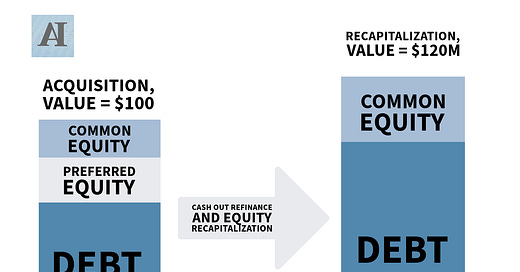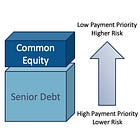Recapitalizations in Real Estate
Not Every “New” Deal Is Actually New—How to Spot Recapitalizations and Assess Their Risks
A few months ago, I reviewed an equity multifamily deal. The pitch deck had the usual: acquisition price, business plan, sources and uses and fee break-down (with an acquisition fee). I can’t remember what tipped me off, but I had a nagging feeling this asset was not being newly acquired. Combed through the deck - no mention of anything unusual.
💡I then checked county records - lo and behold, the property was purchased by the same sponsor years ago. The deal was a recapitalization (the case study is coming on Sunday — don’t miss it).
Before we jump into recapitalizations, you need to know what a capital stack is:
🔎 What’s a Recapitalization?
Recapitalization is a financial strategy used by property owners to restructure a property's capital stack by bringing in new investors, refinancing debt, or adjusting equity allocations. Here’s how it typically breaks down:
Equity recapitalization: new equity investors inject capital, allowing existing investors to exit partially or reinvest in improvements.
Debt recapitalization: refinancing existing loans (or obtaining additional loans on the same property).
Hybrid: a mix of both—adjusting debt and swapping out equity holders simultaneously.
Today, we’ll explore the pros and cons of recapitalization and highlight three key considerations for limited partners (and THE MOST important question to ask).





